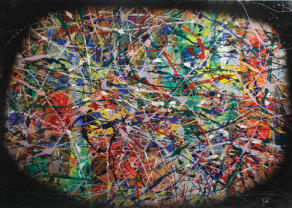There is a growing need for having some dynamic tensions within the organization’s system; these helps generate the better conditions for innovation to thrive. We are learning more on the better tools, techniques and approaches available for putting the learning tensions into our work, making them more dynamic, linked and increasingly relevant to the work to be done.
1). A common language is essential
Any dynamics in the system needs that ability to talk the same language, something that becomes common and embedded to support the routines and move quicker to the concepts and solutions, as others can ‘understand’ them as well. It is through working on the inner stories and appreciating the history, it is having an appreciation of events, good and bad, it is through local slogans, your jargon and dialogues that bring people together. The power of storytelling helps gain adoption and identification to those needs for working on a common cause.
Continue reading “Putting some dynamic tension into the system”

 So what does block innovation? Arguably there are plenty of things up and down organizations.
So what does block innovation? Arguably there are plenty of things up and down organizations.


 I was reminded last week of what I seem to have forgotten in my years of focusing on innovation or was it that feeling it was simply repeating. I am constantly aware on just how innovation has seemingly stayed still in much of its design in recent years, irrespective of what we believe has been ‘innovation advances’.
I was reminded last week of what I seem to have forgotten in my years of focusing on innovation or was it that feeling it was simply repeating. I am constantly aware on just how innovation has seemingly stayed still in much of its design in recent years, irrespective of what we believe has been ‘innovation advances’. Coaching offers real benefits. For instance, in Leadership Coaching, the results offer an ROI on the initial investment of nearly SIX times on average.
Coaching offers real benefits. For instance, in Leadership Coaching, the results offer an ROI on the initial investment of nearly SIX times on average. So my further part of how we need to set about and differentiate ourselves
So my further part of how we need to set about and differentiate ourselves It is our non-physical assets that drive innovation, these make up our knowledge-based capital. The economic value of managing our knowledge capital offers the Enterprise the opportunity to transform themselves and perform at higher levels of awareness.
It is our non-physical assets that drive innovation, these make up our knowledge-based capital. The economic value of managing our knowledge capital offers the Enterprise the opportunity to transform themselves and perform at higher levels of awareness. How do we show the real difference that innovation can provide?
How do we show the real difference that innovation can provide?